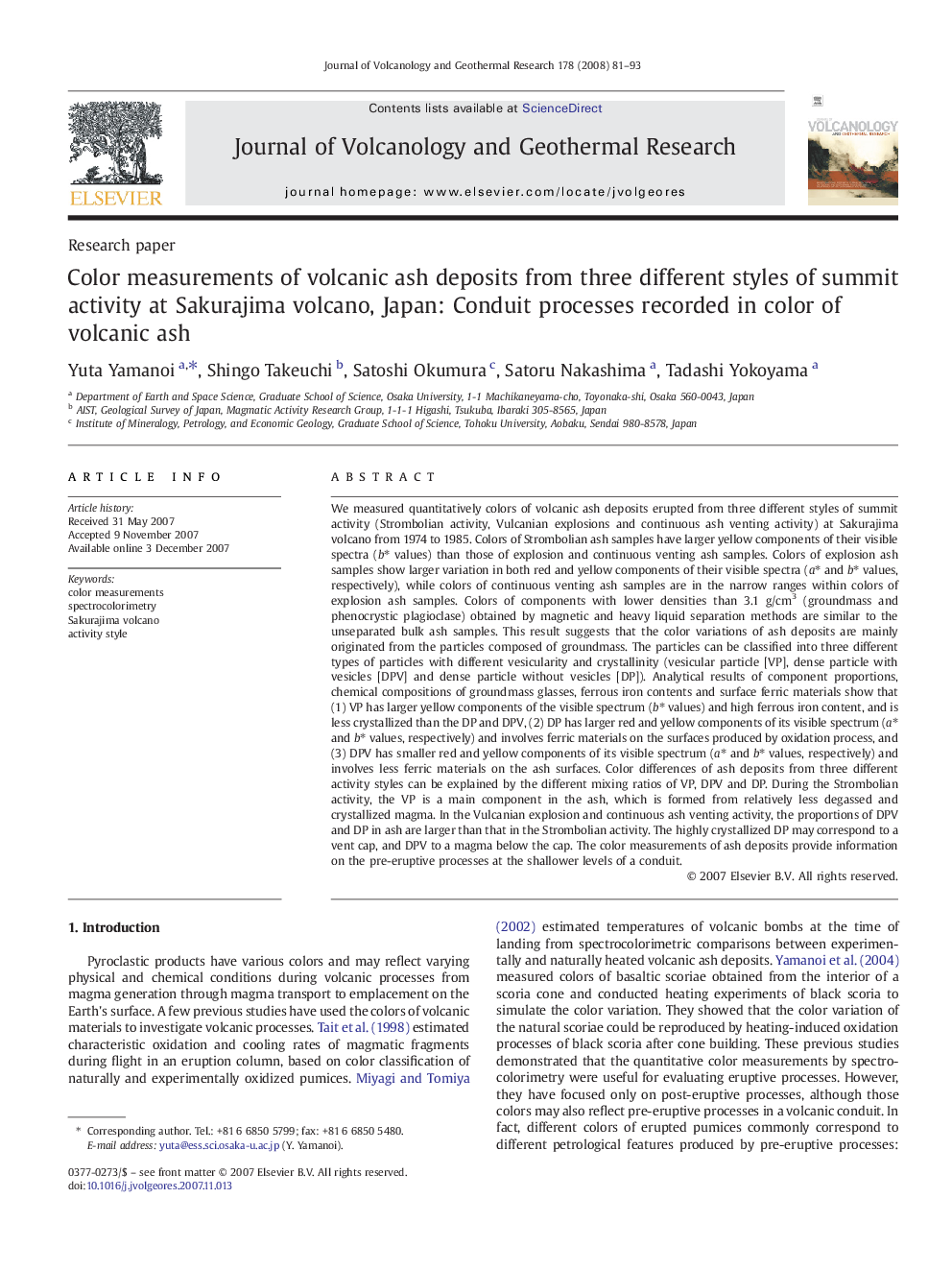| Article ID | Journal | Published Year | Pages | File Type |
|---|---|---|---|---|
| 4713500 | Journal of Volcanology and Geothermal Research | 2008 | 13 Pages |
We measured quantitatively colors of volcanic ash deposits erupted from three different styles of summit activity (Strombolian activity, Vulcanian explosions and continuous ash venting activity) at Sakurajima volcano from 1974 to 1985. Colors of Strombolian ash samples have larger yellow components of their visible spectra (b⁎ values) than those of explosion and continuous venting ash samples. Colors of explosion ash samples show larger variation in both red and yellow components of their visible spectra (a⁎ and b⁎ values, respectively), while colors of continuous venting ash samples are in the narrow ranges within colors of explosion ash samples. Colors of components with lower densities than 3.1 g/cm3 (groundmass and phenocrystic plagioclase) obtained by magnetic and heavy liquid separation methods are similar to the unseparated bulk ash samples. This result suggests that the color variations of ash deposits are mainly originated from the particles composed of groundmass. The particles can be classified into three different types of particles with different vesicularity and crystallinity (vesicular particle [VP], dense particle with vesicles [DPV] and dense particle without vesicles [DP]). Analytical results of component proportions, chemical compositions of groundmass glasses, ferrous iron contents and surface ferric materials show that (1) VP has larger yellow components of the visible spectrum (b⁎ values) and high ferrous iron content, and is less crystallized than the DP and DPV, (2) DP has larger red and yellow components of its visible spectrum (a⁎ and b⁎ values, respectively) and involves ferric materials on the surfaces produced by oxidation process, and (3) DPV has smaller red and yellow components of its visible spectrum (a⁎ and b⁎ values, respectively) and involves less ferric materials on the ash surfaces. Color differences of ash deposits from three different activity styles can be explained by the different mixing ratios of VP, DPV and DP. During the Strombolian activity, the VP is a main component in the ash, which is formed from relatively less degassed and crystallized magma. In the Vulcanian explosion and continuous ash venting activity, the proportions of DPV and DP in ash are larger than that in the Strombolian activity. The highly crystallized DP may correspond to a vent cap, and DPV to a magma below the cap. The color measurements of ash deposits provide information on the pre-eruptive processes at the shallower levels of a conduit.
